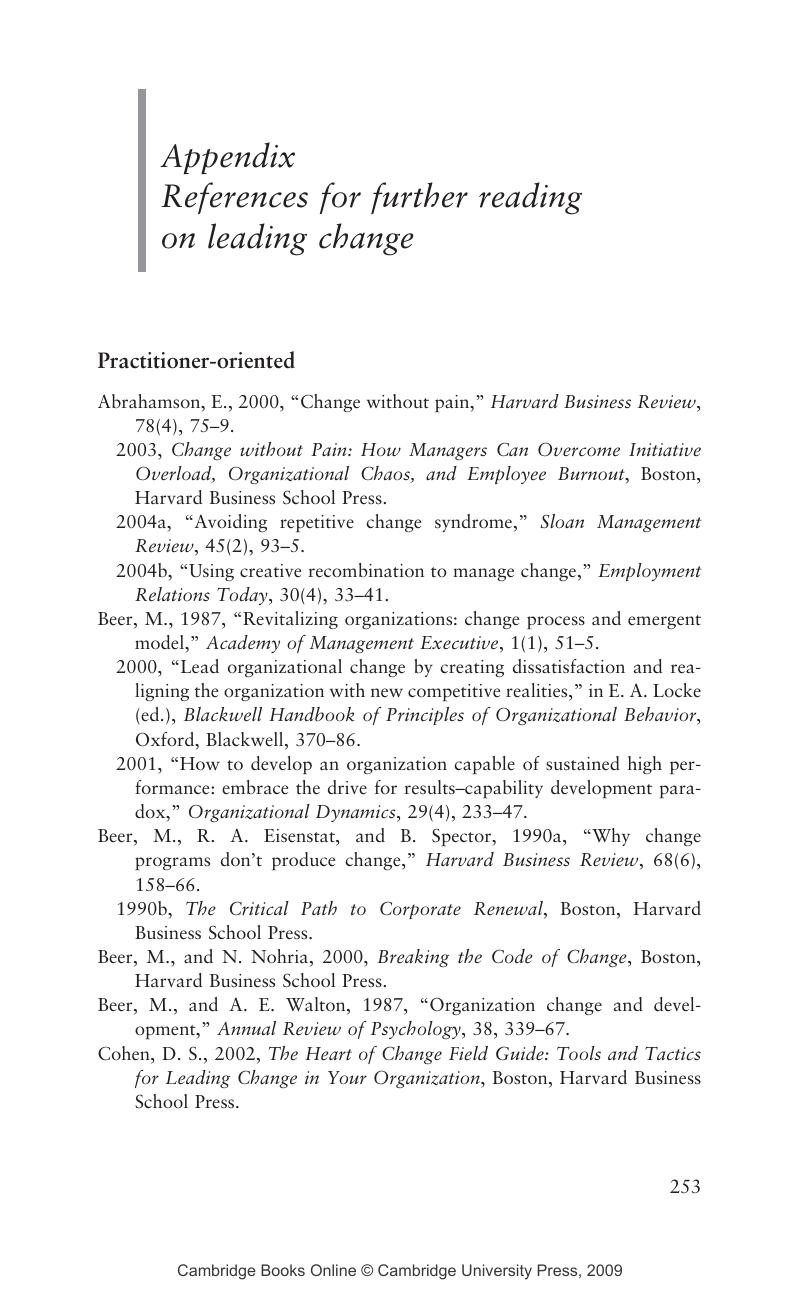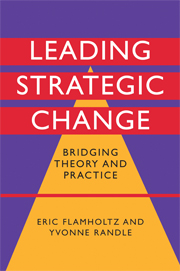Book contents
- Frontmatter
- Contents
- List of exhibits
- Preface
- Acknowledgments
- Part I An integrative framework for leading strategic and organizational change
- Part II Leading strategic change in actual organizations
- Part III Leading strategic change: lessons learned from practice
- Appendix: References for further reading on leading change
- Index
- References
Appendix: References for further reading on leading change
Published online by Cambridge University Press: 22 September 2009
- Frontmatter
- Contents
- List of exhibits
- Preface
- Acknowledgments
- Part I An integrative framework for leading strategic and organizational change
- Part II Leading strategic change in actual organizations
- Part III Leading strategic change: lessons learned from practice
- Appendix: References for further reading on leading change
- Index
- References
Summary

- Type
- Chapter
- Information
- Leading Strategic ChangeBridging Theory and Practice, pp. 253 - 257Publisher: Cambridge University PressPrint publication year: 2008



